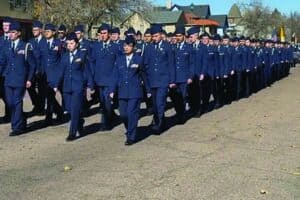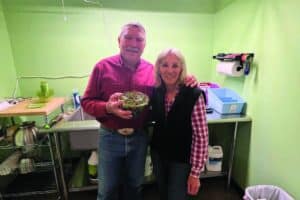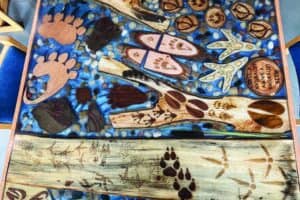This month, we will interview local bird bander Susan Craig.Bookman: Susan, could we start by getting a little history about you?Craig: In 1968, I began birding with the Aiken Audubon Society here in Colorado Springs. From then on, I was irrevocably captivated by birds. After living in Taiwan and upstate New York, I began to think about catching and banding birds to increase my knowledge of birds. After working with an instructor in Massachusetts, I received a Master Bander Permit in 1976. From 1980 to 1990, I lived in Florida, working with a raptor bander. We banded hundreds of hawks and songbirds in Florida, and hundreds of owls during an assignment in 1988 at Whitefish Point Bird Observatory in Michigan’s Upper Peninsula.Bookman: What is bird banding?Craig: The practice of bird banding began hundreds of years ago when Romans first tied colored strings on the legs of swallows. Since hunters are bird collectors, early bird banding began with ducks. Songbird and raptor banders rely on recapture and recovery data to provide similar information for ornithological research. Thus, we learn where our birds go after we band them, how long they live and whether they return to the same area. Combined with observational data, scientists can determine whether birds are gaining or losing in overall population.Interest in banding grew in this country until, in 1920, the U.S. Fish and Wildlife Service took over the American Bird Banding Association to better standardize and regulate banding activities. To be granted a federal permit, all present-day banders must be certified, learning to handle birds correctly and safely. For each bird banded, careful records are kept and submitted to the Bird Banding Lab (BBL, now under the aegis of USGS) every year. State permits and annual reports are also required. Unless they’re fortunate enough to work for a bird observatory like the Rocky Mountain Bird Observatory in Brighton (Colo.), banders work as volunteers. BBL provides bands, but banding supplies – nets, traps, measuring devices, scales, special pliers – are at the volunteer’s expense.Bookman: How are the birds captured?Craig: Songbirds are usually captured using mist nets, a long fine-mesh net strung between poles in an area of bird traffic, perhaps near a bird feeder or in a section of woods where birds are passing through. Once captured, birds are carefully removed from the net and placed in a soft cotton drawstring bag to be carried back to the banding site. There, the bird is banded, measured, age and sex determined, and then it’s released back to the care of the sky.Bookman: So why do you band birds?Craig: In some ways, this avocation can be likened to a note put in a bottle that’s thrown into the sea. Like finding that note years later, recapturing a banded bird provides an immense reward for all those hours spent in the field. Last fall, I recaptured two banded birds at a migration site south of Colorado Springs. Both birds, a Song Sparrow and a White-Crowned Sparrow, had been banded at the same site in 1999. These recaptured birds provide information on longevity and site fidelity.As a special study, some banders focus on rare or endangered birds, or species that are hard to find. I’ve chosen to study the Loggerhead Shrike, which isn’t endangered, but can be hard to catch and even harder to handle since they bite viciously. I’ve invented a safe and successful trap, which enabled me and a colleague to band nearly 2,000 of them across the U.S.People sometimes ask me about my favorite bird. I’ve banded warblers and other colorful birds, many hawks of various species and several hundred owls. But my best capture occurred in 1989 while living in Florida. There I caught a Peregrine Falcon that had been banded in Greenland earlier that same year. That encounter will always be special to me.






